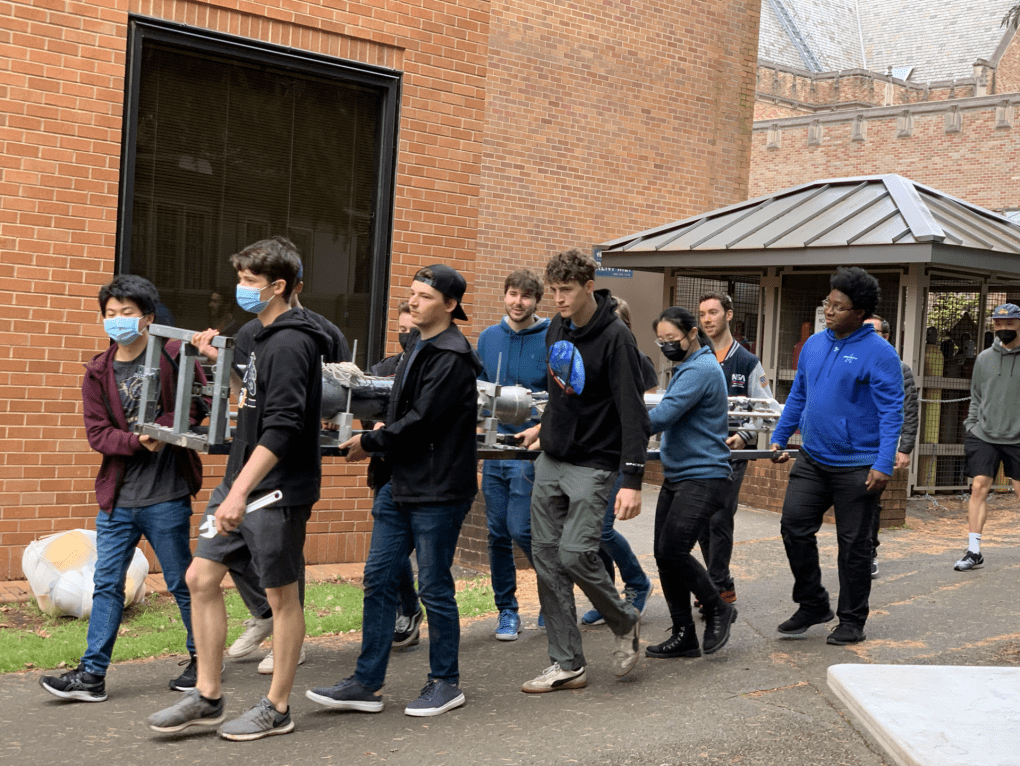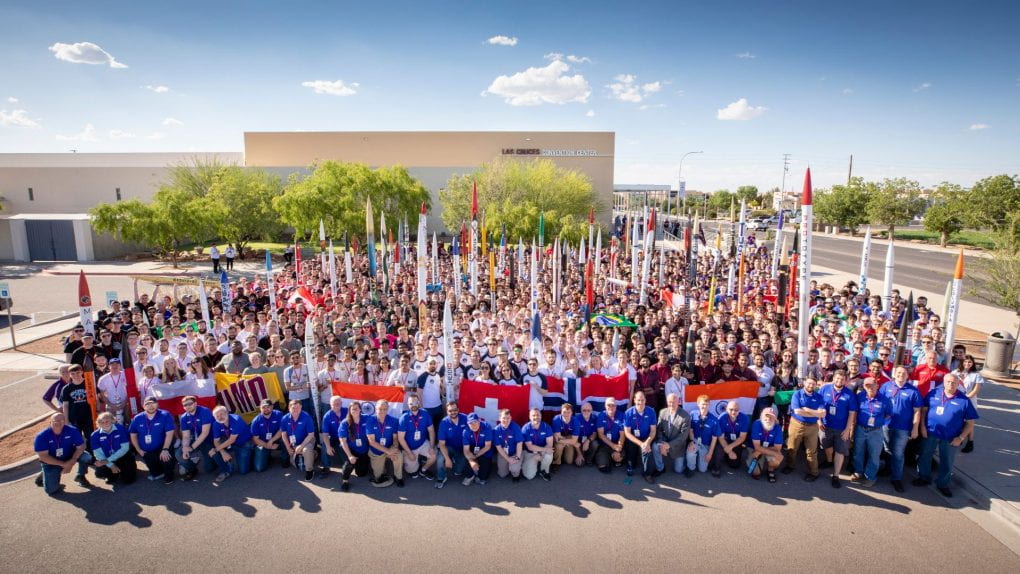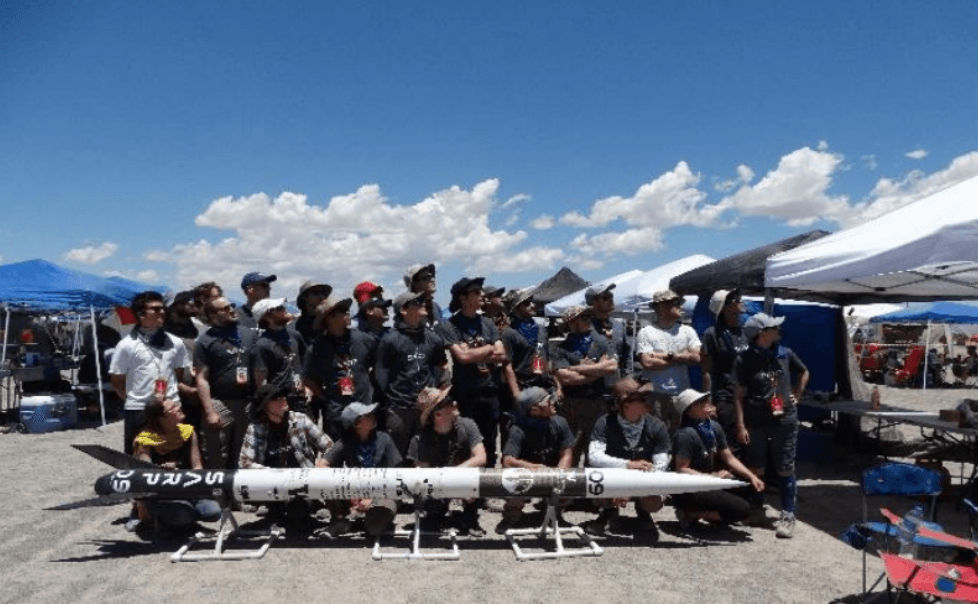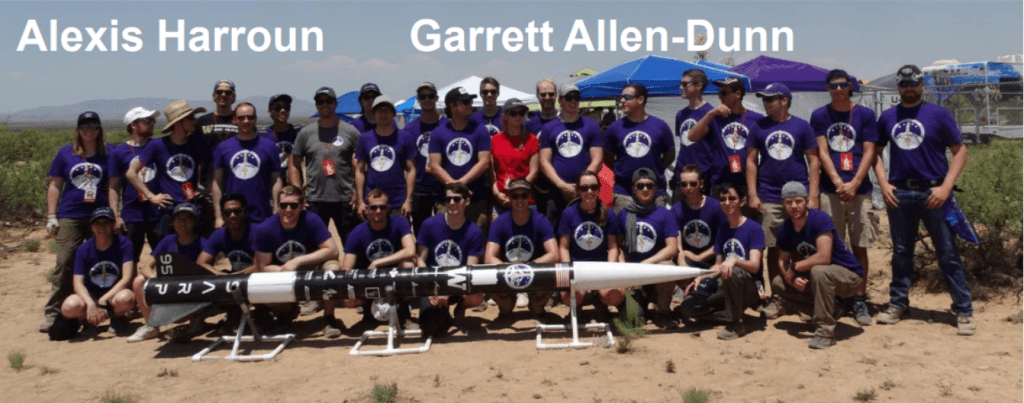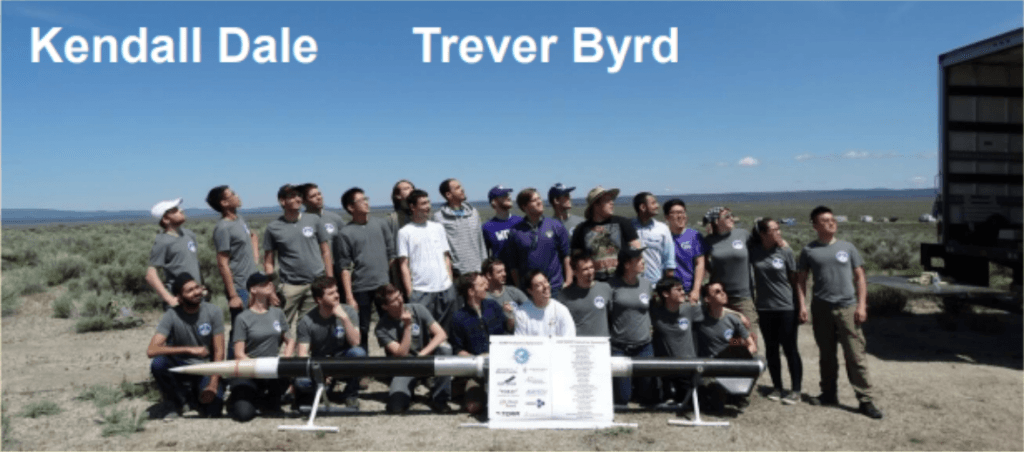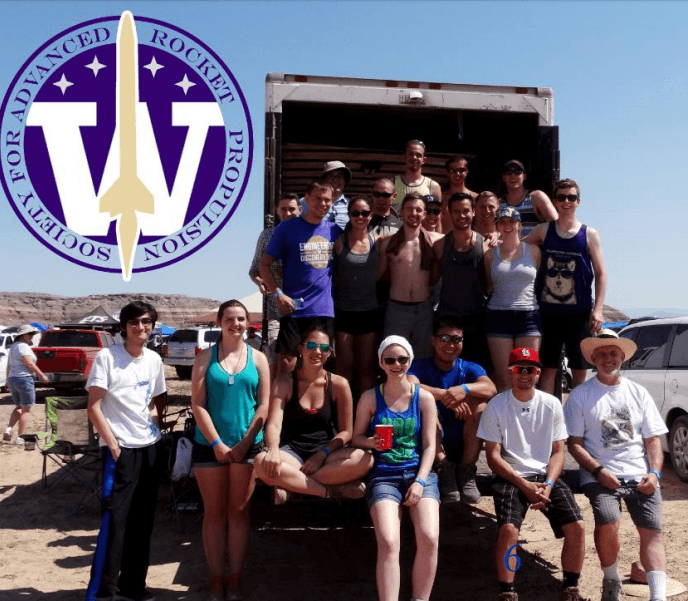Before the Society of Advanced Rocket Propulsion came about at the University of Washington, we had an interest and that interest sparked action.
In 2008, Professor James C. Hermanson visited the annual Intercollegiate Rocket Engineering Competition at Green River in Utah.
In 2009, a graduate course was created (AA 598G) was created and co-taught by Professors James C. Hermanson, Adam Bruckner, and Carl Knowlen. The course was designed to build a sounding rocket over three quarters and launch at the Intercollegiate Rocket Engineering Competition (IREC). In Spring of 2009, the rocket launched to 12,500 feet above ground level (AGL), earning 2nd place and winning the Excellence in Engineering award.
In 2011, a graduate independent study course was organized to develop a high-power hybrid rocket and was open to undergraduates as well. The rocket static fired a full-scale motor at IREC.
In 2021, SARP officially became the largest engineering RSO at the University of Washington. Over the course of the year, the construction of the organization’s first liquid bipropellant rocket, Pacific Impulse, continued to progress, and the subsystems were subjected to rigorous testing. SARP continues to strive towards the goal of getting Pacific Impulse to space by 2025.
Over the course of 2019, SARP grew again to support almost 200 members. Remote fill safety was improved, and technology was developed to allow for fully wireless launch operations. Returning to the Spaceport America Cup for the third year, SARP’s rocket launched and successfully reached a height of 17,000 feet above ground level. It was declared the Overall Winner, took first place in the 30K SRAD Category, and was presented with the Judge’s Choice award.
SARP reaches a staggering 100+ undergraduate members. USEED crowd-funding effort raises $22.2K, industry donates $10.5K, and the Aeronautics & Astronautics Department at UW pitches in $11K! New rocket modifications include: nitrous oxide tank shortened in length and increased diameter to 8″ implemented pneumatic actuated valve wireless remote nitrous oxide loading capability improved longer launch rail so a mechanism is needed to lift rocket up improved fin-can lay-up procedure reduced nosecone cost by using fiberglass Launch at IREC-SAC (Spaceport America Cup) performed well until about 4000 feet where the rocket experienced a structural failure in flight. It experienced a hard landing…Read More
SARP reaches ~70 undergraduate members, continually growing in interest. USEED crowd-funding raises ~$16K and local industries donate ~$10K in cash and kind. New design implementations include: overall 8-inch diameter new goal is 30,000 feet with class-O motor larger nitrous oxide tank motor redesigned for Arduino controlled valve remote fill system developed There was no test launch this year. IREC 2017 takes place at Spaceport America in New Mexico for the first time. Rocket launch at IREC reaches the ~12500 feet AGL and motor was fully functional through launch. SARP placed 2nd place at IREC. The rocket was initially lost but…Read More
SARP reaches ~50 undergraduate members. USEED crowd-funding raises ~$15K, Blue Origin donates ~$5K for payload, and local industries donate ~$5K in cash and kind. New design implementations include: motor redesigned to prevent burnout new main chute deployment separation new filling procedures implemented Test launch at Brothers, OR, experienced a pre-ignition issue and lost the rocket. This was the first serious safety incident and an incident report was presented at IREC by two students. No IREC launch.
SARP now comprises of about 30 undergraduates. The team was able to initiate USEED crowd-funding and raise ~$16K in addition to ~$8K from local industries. New design implementations include: motor redesigned to prevent burn out Parachutes designed & fabricated in-house by students (Melanie) New composite airframe designed & fabricated Payload development coordinated with local company & high school Test launch at Mansfield, WA, reached the 4000 feet AGL. Unfortunately, the rocket encountered a motor insulation failure and only reached the ~2200 feet AGL at IREC.
SARP registers as a Registered Student Organization at the University of Washington a second time with about 16 students comprised of undergraduates and graduates. The rocket completed a successful flight test at Mansfield, Washington, reaching ~6000 feet AGL. At IREC, the rocket reached ~8000 feet AGL with a hybrid motor that used a new propellant formulation, new composite airframe, new recovery system, and new launch tower.
The Society of Advanced Rocket Propulsion (SARP) was first formed in 2012 with about 10 students competing in the Intercollegiate Rocket Engineering Competition. Aiming for the 25,000 feet AGL, the team won 1st place and the Excellence in Engineering award with a class-O hybrid motor.
